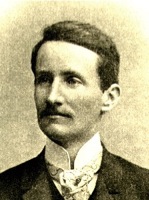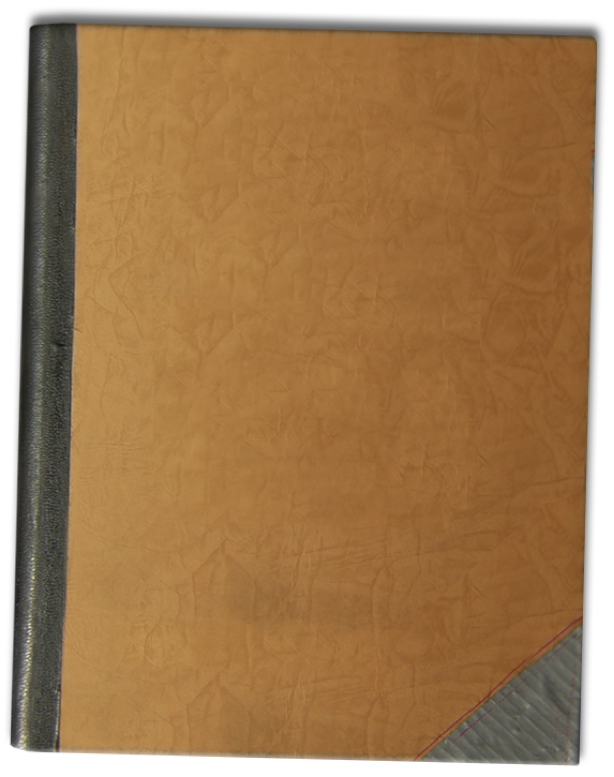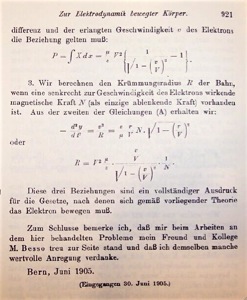














A. Martínez, “Kinematic Subtleties in
Einstein’s First Derivation of the Lorentz
Transformations,”
American Journal of Physics, Vol. 72,
No. 6 (June 2004), pp. 790-798.



How did Einstein first derive
the Lorentz transformations ?
The Lorentz transformations are the central equations of special relativity. Einstein showed that these equations had significance beyond electrodynamics, for physics in general, by deriving them from general principles. His overall approach was convincing, but strangely, his original procedure was misunderstood for nearly a hundred years, even by specialists.

What is length contraction, Really ?
In 1889, George Francis FitzGerald proposed the hypothesis that moving objects contract as they plow through the ether. In 1905, Einstein argued instead that the contraction is not dynamical but instead that length varies relative to inertial systems. Over the decades, most physicists have agreed with Einstein, yet some have argued that parts of FitzGerald’s original explanation make more sense. Thus Harvey R. Brown, at Oxford University, has advanced a provocative revival of FitzGerald’s outlook, which I critically discuss in this article.
A. Martínez, “Material History and
Imaginary Clocks: Poincaré, Einstein,
and Galison on Simultaneity,”
Physics in Perspective, Vol. 6, No. 2
(June 2004),pp. 31-48.











How was Einstein influenced
by his job at the Swiss Patent Office ?
Recently, Peter Galison of Harvard University and Arthur I. Miller of University College London have argued at length that Einstein’s job as a patent examiner involved analyses of new technologies on the synchronization of clocks. They claim that reflection on such mechanisms led Einstein to conceive the relativity of time. But what evidence is there for their conjecture? In this article I critically contrast hypotheses and evidence.





A. Martínez, “There’s No Pain in the
FitzGerald Contraction, Is There?”
Studies in History and Philosophy of
Modern Physics,
Vol. 38 (2007), pp. 209-215.


Did Einstein regard simultaneity
as a convention ?
In 1898 Henri Poincaré argued that the simultaneity of distant events is not known as a matter of experimental fact, but instead is defined by convention. Over the subsequent century, various writers have disagreed: some argue that simultaneity (and the one-way speed of light) is a convention, while others claim that it’s an experimental fact. And both have claimed that Einstein was on their side. So where did he really stand? This paper answers that question as it compares the works of Poincaré, Einstein and Hans Reichenbach. It also responds critically to Hans Ohanian’s claims that dynamical factors in the definition of inertial reference frames prevent any freedom of choice in establishing the simultaneity of distant events.
A. Martínez, “Conventions and Inertial
Reference Frames,”
American Journal of Physics, Vol. 73,
No. 5 (May 2005), pp. 452-454.




How have Field Theories evolved
over the past two centuries ?
Despite Einstein’s contributions to the quantum theory, he sought to explain both light and matter in terms of continuous fields. This article, coauthored with S.S. Schweber, traces the evolution of field theories against the abundant discoveries of seemingly elementary material particles.
A. Martínez and S. Schweber,
“Field Theories,”
New Dictionary of the History of Ideas,
edited by M. Horowitz, Vol. 2 (Charles
Scribner’s Sons / Thomson Gale, 2005),
pp. 831-834.




A. Martínez, “Ritz, Einstein, and the
Emission Hypothesis,”
Physics in Perspective, Vol. 6,
No. 1 (April 2004), pp. 4-28.


Does the speed of light depend
on the speed of its source ?
Before formulating his theory of special relativity, Albert Einstein spent a few years trying to formulate a theory in which the speed of light depends on its source, just like all material projectiles. Likewise, Walter Ritz outlined such a theory, where none of the peculiar effects of Einstein’s relativity would hold. By 1913 most physicists abandoned such efforts, accepting the postulate of the constancy of the speed of light. Yet five decades later all the evidence that had been said to prove that the speed of light is independent of its source had been found to be defective.


Ten Years to Special Relativity!
From 1895 to 1905, the young Albert Einstein thought about light and moving bodies, which led to his special theory of relativity. Here’s a chapter from Kinematics: The Lost Origins of Einstein’s Relativity (Johns Hopkins University Press, 2009). Contrary to nearly all accounts of the history of relativity, this one proceeds chronologically, and avoids speculations and exaggerations. In the very popular field of the history of special relativity, no other work uses so many sources to reconstruct the development of the young Einstein’s thoughts.
Henri Poincaré
Albert Einstein
Walter Ritz



A. Martínez, “The Myriad Pieces of
Einstein’s Remains,”
Annals of Science, Vol. 68, No. 2
(April 2011), pp. 267-280.


The Collected Papers of Albert Einstein
This essay reviews the first twelve volumes of The Collected Papers of Albert Einstein, the largest historical project to thoroughly document the life and times of a scientist. Since the 1970s, the Einstein Papers Project has labored to organize and annotate a collection that now includes more that 77,000 items. I discuss the trajectory, compromises, and achievements of this immense historical enterprise.



A. Martínez (c) 2007



BOOK REVIEWS
on History of Relativity
“Einstein, the Traveling Physicist,” review of Josef Eisinger’s Einstein on the Road, in Physics World, Vol. 25, No. 4 (April 2012), pp. 40-41.
Symposium, Essay Review of Richard Staley’s Einstein’s Generation: The Origins of the Relativity Revolution, in Metascience, Vol. 20, No. 1 (2011), pp. 61-67.
Review of Richard Staley’s Einstein’s Generation: The Origins of the Relativity Revolution, in Studies in History and Philosophy of Modern Physics, Vol. 41, No. 4 (November 2010), pp. 366-367.
Review of Hans C. Ohanian’s Einstein’s Mistakes: The Human Failings of Genius, in The Historian, Vol. 72, No. 3 (Fall 2010), pp. 722-723.
Essay Review of Harvey R. Brown’s Physical Relativity, in Studies in History and Philosophy of Modern Physics, Vol. 38, No. 1 (March 2007), pp. 209-215.
Review of Max Jammer’s Concepts of Simultaneity: From Antiquity to Einstein and Beyond, in Physics Today, Vol. 60, No. 8 (August 2007), pp. 58-59.
Review of John Rigden’s Einstein 1905: The Standard of Greatness, in Physics Today, Vol. 59, No. 3 (March 2006), pp. 64-65.
“Railways and the Roots of Relativity,” review of Peter Galison’s Einstein’s Clocks, Poincaré’s Maps, in Physics World, Vol. 16, No. 11 (November 2003), p. 51.
Review of John Stachel’s Einstein from ‘B’ to ‘Z’, in Physics in Perspective, Vol. 5, No. 3 (September 2003), pp. 352-354.